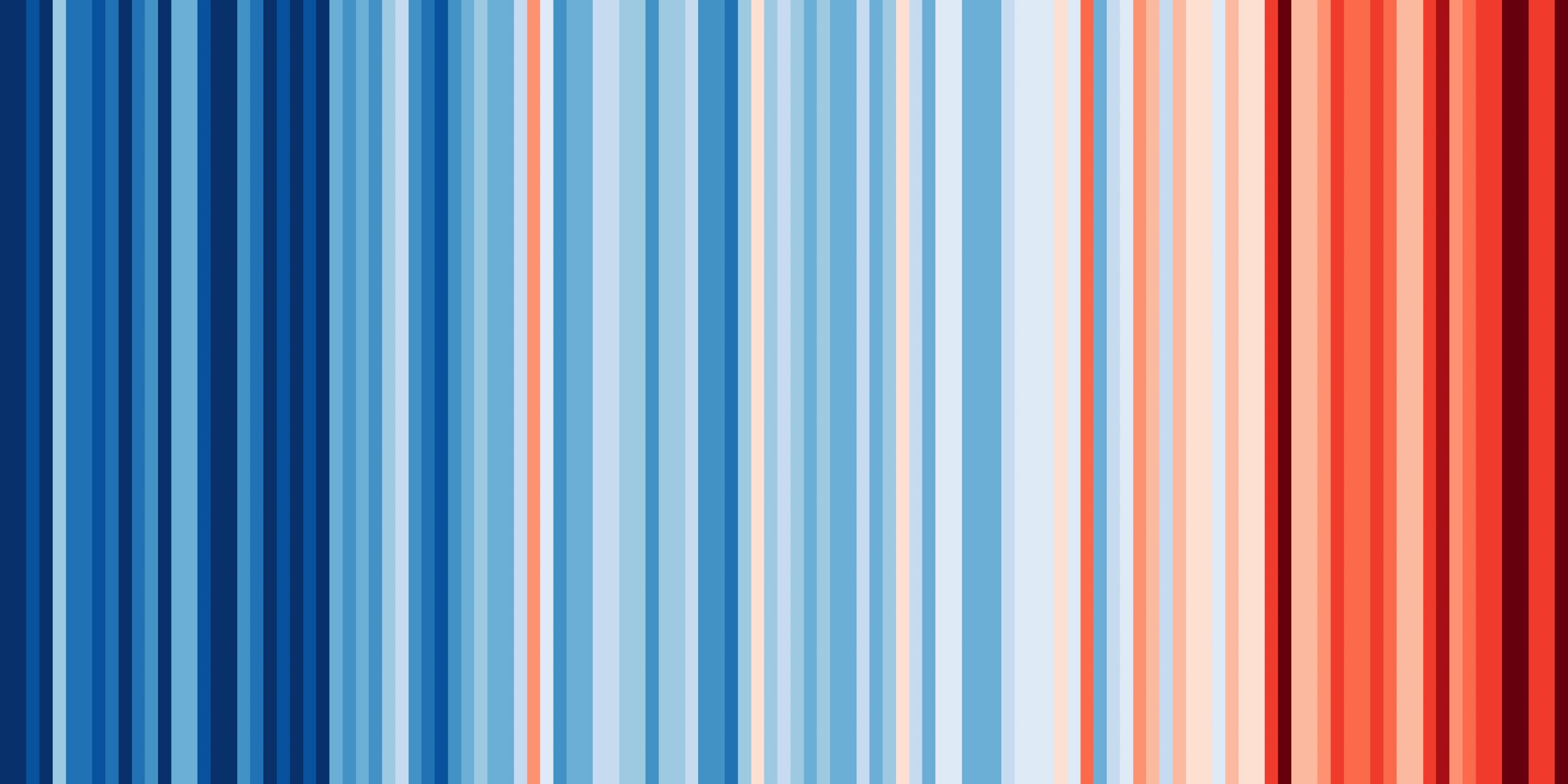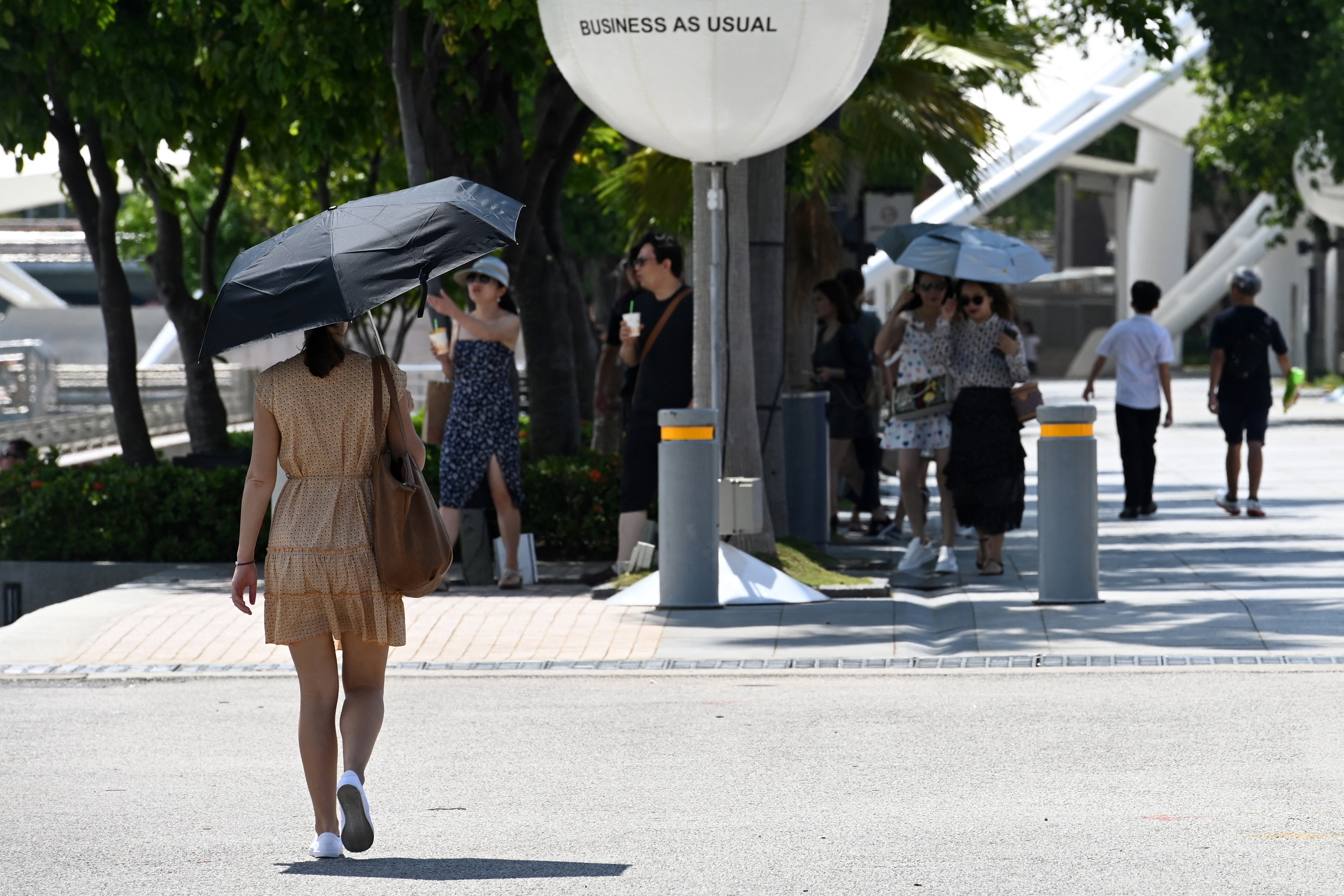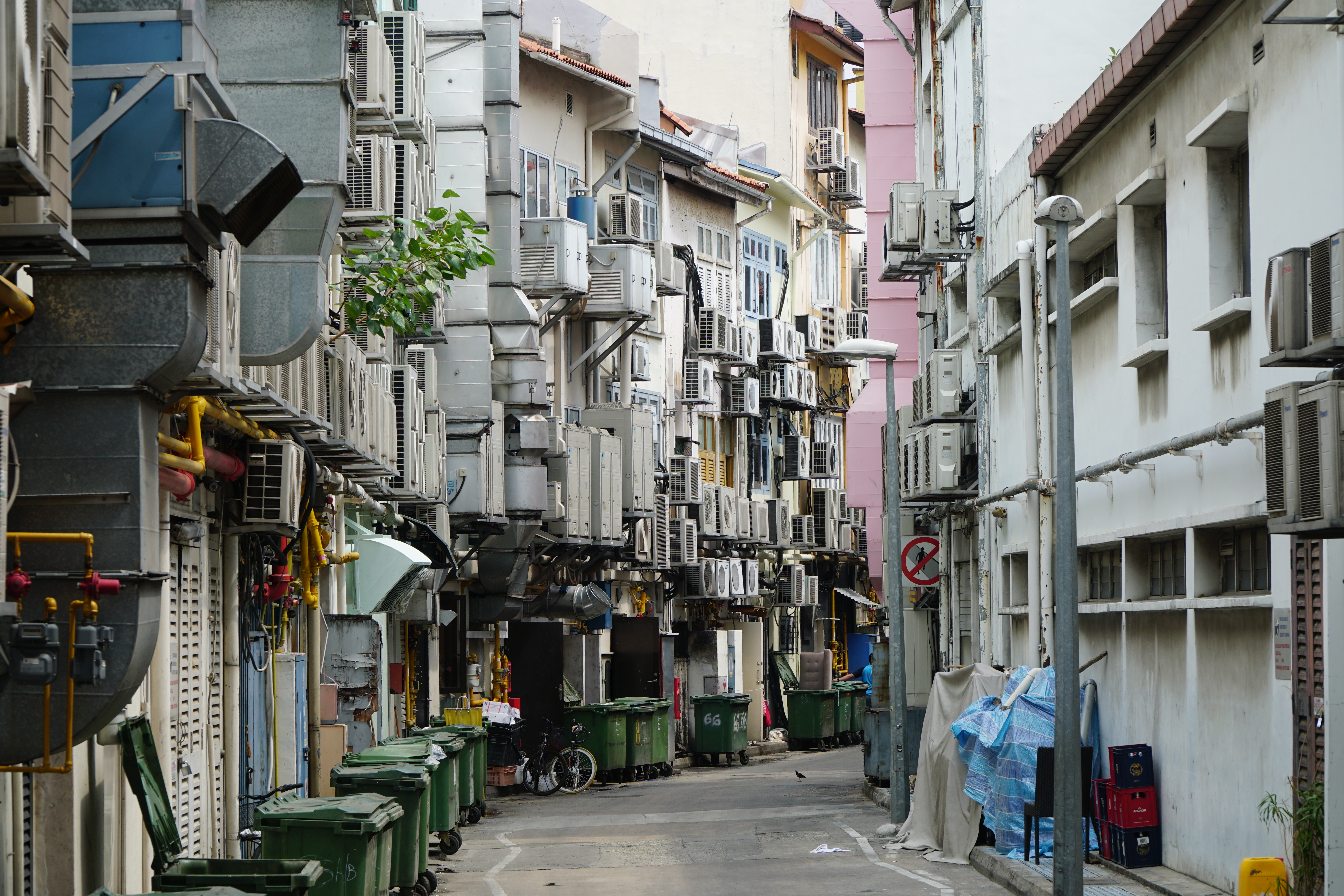
Can Singapore Control Its ‘Diabolical’ Hot Weather?
March 5, 2021It’s often said that Singapore has four seasons: hot, hotter, hottest, and hell.
But the joke reflects a disturbing reality: experts say Singapore is now warming two times faster than the rest of the world on average. Weather conditions are also set to get more extreme and unpredictable as carbon emissions continue to rise, posing serious health risks for residents of the Southeast Asian island nation.
“Because of our warm and humid climate, every small increase in air temperature will be felt disproportionally strongly,” Matthias Roth, a professor from the National University of Singapore’s geography department, told VICE World News.
Experts like Roth have noted that that more severe heat conditions could put people at higher risk of having a stroke.
The faster increases have been going on for years, but residents of heavily-urbanized Singapore, which sits just 85 miles north of the equator, say the past few months have been particularly unbearable.
“Singapore is hot all year round and it’s normal to feel the heat more at this time of the year, but the weather lately has not felt normal,” said university student and marathon runner Joan Liew, who described the conditions as “excruciating” and “diabolical.”
She added that she has now avoided exercising outdoors.

While Liew’s experience is anecdotal, she is not imagining things.
Singapore’s official meteorological agency noted a recent sharp rise in temperatures and warned that maximum daily temperatures could reach 40 degrees Celsius (104 degrees Fahrenheit) by as early as 2045.
The increase has been closely charted by British climate professor Ed Hawkins, who created a public color heat chart showcasing how much countries and continents have warmed over the past decade. In the case of Singapore, a clear change in gradient from cool blues to warm, bold reds can be seen between 1901 and 2019, the country’s hottest year on record.

“Everyone can look at these visualizations and instantly understand how temperatures in their own locations have changed,” Hawkins told Singapore’s TODAY newspaper.

Singaporean climate change scientist and professor Winston Chow attributed the rising temperatures to a phenomenon known as the “Urban Heat Island Effect,” which occurs when cities replace natural land cover with dense concentrations of concrete, pavement, buildings, and other surfaces that absorb and retain massive amounts of heat.
“Singapore has definitely been getting hotter and every degree counts,” Chow told VICE World News in a phone interview. “The hot weather we’ve been experiencing recently is not only a clear indicator of climate change but also the effect of how rapidly urbanization alters local climates.”
The city-state, which prides itself on being a “garden city,” has taken on the ambitious initiative of planting one million trees over the next decade to restore nature.
But according to Chow, who has been studying the effects of urbanization on climate change for the past 15 years, planting trees alone will not be enough to mitigate the effects of climate change.
“Trees provide shade and help cool our local climates and reduce temperatures but it simply isn’t enough,” he said.
“Planting trees simply isn’t enough.”
“Buildings, vehicles, as well as our huge dependency on fossil fuels are all major culprits of waste heat that’s being injected into our environment — that’s a major reason why Singapore is heating up so fast.”

The battle to switch off air-con in Singapore
Recognizing the problem with urbanization, architects and academics have turned to design and technology in an attempt to bring rising temperatures down.
One such initiative is the Cooling Singapore Project, which aims to explore new and innovative ways to lower the heat by focusing on urban geometry and introducing more water features and shade to control air flow.
“We are seeking to not only to improve residents’ comfort level outdoors, but the liveability and well-being of residents, and sustainability of Singapore as a whole,” said Lea Ruefenacht, an urban designer involved with the project.
“The ultimate goal is to provide new knowledge to planners in order to make more evidence-based design decisions in response to the climate conditions of an urban area.”
But perhaps the biggest challenge lies with its 5.7 million residents, who turn to air-conditioning as a quick fix to beat the heat. Singapore has the most air-conditioning units per capita in Southeast Asia, with homes, offices and shopping malls all relying on the steady supply of chilly air to stay cool.
“In terms of generating waste heat, air conditioning is the main culprit,” Chow said. “It’s a huge energy guzzler and causes our already hot urban environment to become even hotter.”

But as Singapore’s seasons go from hot to hell, kicking the habit could prove harder than experts think.
“Air conditioning is expensive and results in heavy electricity bills but when you have to endure another scorching 36 degree day, all you want to do is switch it on and chill out until the sun goes down,” said marathon runner Liew.
Meanwhile, residents like Judith Tan have also begun to notice signs of erratic weather. She said that there has been more frequent and intense rainfall in addition to the rising heat.
“We see dry spells for several weeks and then storms, which are stronger and more frequent with lots of flash flooding,” she said. “We’ve been used to erratic weather given that our country is located near the equator but not like this.”

